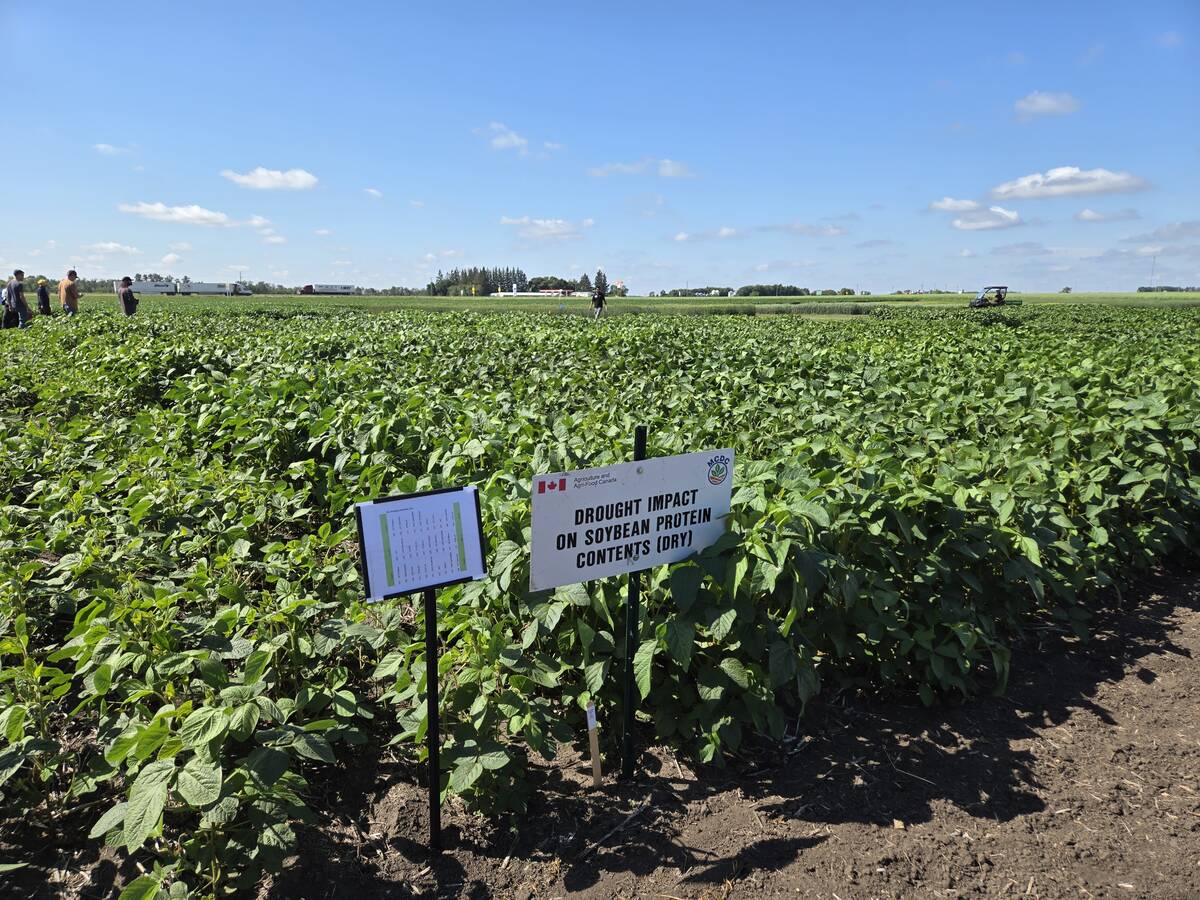Last year was a record year for the Mennonite Central Committee but it’s not the type of record the aid organization plans to celebrate.
From April 2008 to March of 2009, MCC spent $15.75 milion (US) on food assistance around the world, compared to $13 million the previous year.
Two primary factors drove up MCC’s spending on food aid, said Dan Wiens, water and agriculture co-ordinator for MCC globally.
“The raw price of the food that we were purchasing for food assistance (was) higher,” said Wiens of Winnipeg. “But the amount of people that we’re supporting through food assistance has (also) increased.”
Read Also

Carberry field day looks for agriculture solutions
Manitoba farmers explored research solutions for resilient crops, perpetual agronomic issues and new kinds of agricultural products at a field day at the Manitoba Crop Diversification Centre in Carberry on Aug. 6.
Wiens pointed to data from the United Nations Food and Agricultural Organization, which recently warned the number of undernourished people on the planet is expected to grow to more than one billion in 2009 from 852 million in 2008.
Although it’s difficult to put a positive spin on such a crisis, the price spike of 2008 did produce one side benefit, said Paul Hagerman, policy manager for the Canadian Foodgrains Bank. It forced people and politicians around the world to pay attention to agriculture again.
“If you would look back in the ’80s, countries that support foreign aid were giving somewhere around 15 to 20 percent of their total aid budget toward agriculture,” said Hagerman, who also works in Winnipeg.
“That has fallen and fallen and fallen, so that on a world average … it (agriculture aid) is now around four percent.”
The good news, Hagerman said, is that Canada and other G8 countries announced at their summit in early July, that they would spend $20 billion (US) over the next three years on aid for agriculture and food security.
Canada’s contribution will add $600 million (Cdn) over the same time period, which brings Canada’s overall funding to $1.18 billion. In a release announcing the commitment, the federal government noted that food security is now one of the country’s five international assistance priorities.
The attention to hunger and commitment of dollars are a welcome shift in priorities, Hagerman said.
“Last fall everybody was concerned about banks and economics. And the fear was that food would fall off the table,” he said. “I think the FAO and a number of other organizations did a good job of trying to maintain the spotlight on food.”
The specifics of how the Canadian International Development Agency and other groups will spend that money has not been released. But Hagerman said three or four priorities have been identified.
“One is food aid and nutrition …. One will be support for agriculture and one will be support for research in the field of agriculture,” he said.
Hagerman said CFGB is hopeful the money will be directed at small-scale farmers, at technology that is environmentally sustainable and ensure that the role of women in agriculture is recognized.
The political will to tackle hunger is definitely good news, yet the increasing amount of undernourished people around the world is discouraging, Wiens said.
“The trend for the last 20 or 30 years, has actually been downward, (in terms of) the number of people that are chronically hungry.”
But about five years ago that downward trend flattened out, he noted, and in the last two years the numbers have shot up.
What’s especially troubling is who doesn’t have enough food to eat, Wiens noted.
“The majority of the one billion people who are chronically hungry are farmers,” he said. “There are long-standing issues around global trade and how it’s affecting small holder farmers …. It’s the way that we’ve ordered ourselves, in this global food system, that’s causing at least some of this hunger.”
Infrastructure lacking
The declining amount of food aid over the last two decades combined with the shifting priorities of governments in developing countries mean that farmers in the southern hemisphere don’t have the infrastructure they need to make a living.
“Just logistical things, like roads to get their food to market. And price supports and those things have all more or less evaporated for them,” Wiens noted.
Hagerman agreed that most undernourished people are small-scale food producers, which means assistance should focus less on short-term food aid and more on long-term investment.
“They (farmers) need a better deal so they can produce enough to live on. And produce enough to participate in the marketplace.”















